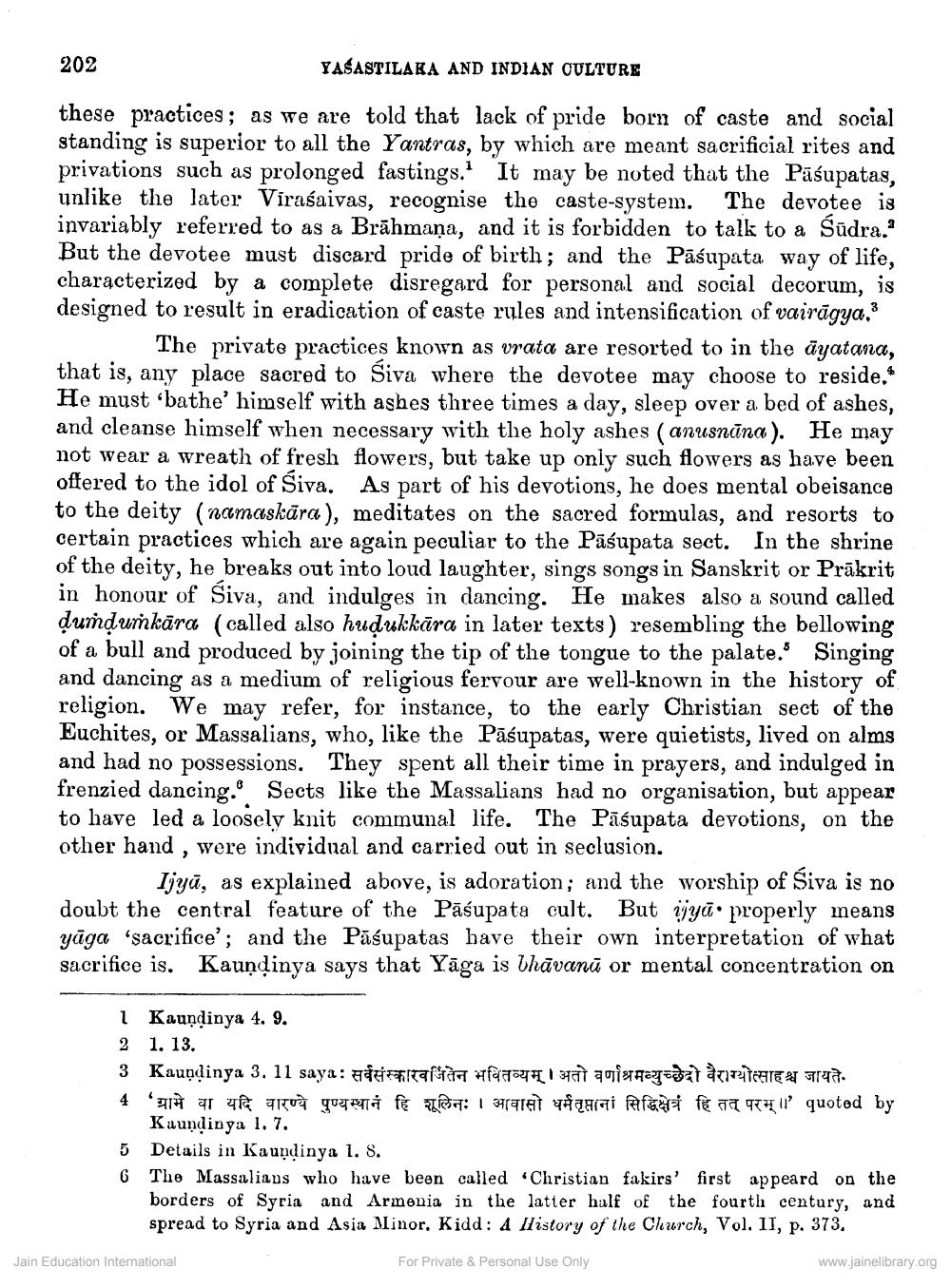________________
YASASTILAKA AND INDIAN CULTURE
these practices; as we are told that lack of pride born of caste and social standing is superior to all the Yantras, by which are meant sacrificial rites and privations such as prolonged fastings. It may be noted that the Pasupatas, unlike the later Viraśaivas, recognise the caste-system. The devotee is invariably referred to as a Brahmana, and it is forbidden to talk to a Śūdra." But the devotee must discard pride of birth; and the Pasupata way of life, characterized by a complete disregard for personal and social decorum, is designed to result in eradication of caste rules and intensification of vairagya,3 The private practices known as vrata are resorted to in the aāyatana, that is, any place sacred to Siva where the devotee may choose to reside.* He must 'bathe' himself with ashes three times a day, sleep over a bed of ashes, and cleanse himself when necessary with the holy ashes (anusnāna). He may not wear a wreath of fresh flowers, but take up only such flowers as have been offered to the idol of Siva. As part of his devotions, he does mental obeisance to the deity (namaskāra), meditates on the sacred formulas, and resorts to certain practices which are again peculiar to the Pasupata sect. In the shrine of the deity, he breaks out into loud laughter, sings songs in Sanskrit or Prakrit in honour of Siva, and indulges in dancing. He makes also a sound called ḍumḍumkara (called also huḍukkāra in later texts) resembling the bellowing of a bull and produced by joining the tip of the tongue to the palate. Singing and dancing as a medium of religious fervour are well-known in the history of religion. We may refer, for instance, to the early Christian sect of the Euchites, or Massalians, who, like the Pasupatas, were quietists, lived on alms and had no possessions. They spent all their time in prayers, and indulged in frenzied dancing. Sects like the Massalians had no organisation, but appear to have led a loosely knit communal life. The Pasupata devotions, on the other hand, were individual and carried out in seclusion.
202
Ijya, as explained above, is adoration; and the worship of Śiva is no doubt the central feature of the Pasupata cult. But jya properly means yaga 'sacrifice'; and the Pasupatas have their own interpretation of what sacrifice is. Kaundinya says that Yaga is bhāvanā or mental concentration on
1 Kaundinya 4. 9.
2 1. 13.
3_Kaundinya 3. 11 saya : सर्वसंस्कारवर्जितेन भवितव्यम् । अतो वर्णाश्रमन्युच्छेदो वैराग्योत्साहश्च जायते.
4 'ग्रामे वा यदि वारण्ये पुण्यस्थानं हि शूलिनः । आवासो धर्मतृप्तानां सिद्धिक्षेत्रं हि तत् परम् ॥' quoted by Kaundinya 1. 7.
5 Details in Kaundinya 1. S.
6
The Massalians who have been called 'Christian fakirs' first appeard on the borders of Syria and Armenia in the latter half of the fourth century, and spread to Syria and Asia Minor. Kidd: A History of the Church, Vol. II, p. 373.
For Private & Personal Use Only
Jain Education International
www.jainelibrary.org




